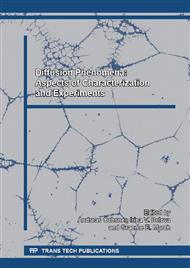p.1
p.10
p.18
p.25
p.34
p.42
p.52
p.60
p.68
Improving Surface Roughness of Steel Parts XC48 by Tribofinishing Process
Abstract:
The present paper examines the influence of the tribofinishing process on the surface state of steel parts XC48, while taking into account the variation in hardness and mass. The tribofinishing process is a mechanical-chemical process, which comprises the use of low frequency impact vibration in the presence of abrasive and chemical additives [1]. The treatment regime (frequency and amplitude) has a great influence on geometrical, mechanical and metallographic treated surfaces. The improvement of the surface quality is determined as a function of the treatment time from 30 to 240 minutes. The tribofinishing process has many technical and economic advantages for the treatment of mechanical parts of simple and complex shapes, which have a better surface finish and improved life of parts etc.
Info:
Periodical:
Pages:
34-41
Citation:
Online since:
April 2016
Authors:
Keywords:
Price:
Сopyright:
© 2016 Trans Tech Publications Ltd. All Rights Reserved
Share:
Citation:


